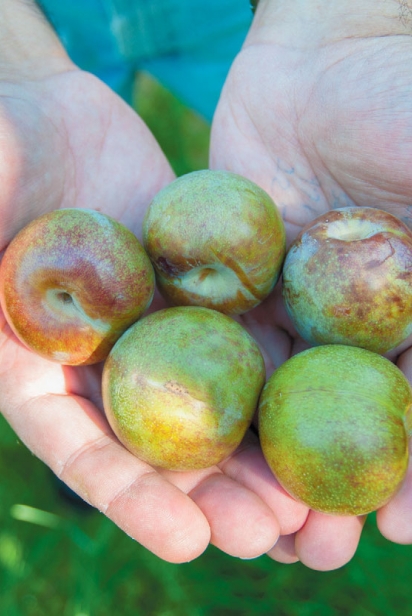Idaho’s Fruit Doctor
Esmaeil “Essie” Fallahi talks fruit and climate change
A former plain of empty farmland now grows orchards full of fruit, nut trees and exotic berries. It’s taken Esmaeil “Essie” Fallahi, PhD, 26 years to transform these 200 acres of farmland in Parma, where he serves as professor and director of the Pomology program of the University of Idaho’s Research and Extension Center.
I recently got the chance to spend an afternoon on the phone with him, learning about his past, his passions and his current projects.
Throughout his research, Fallahi has confronted challenges facing Idaho fruit-growers and cultivated a variety of grapes and berries not typically grown in the state. Fallahi moved to Idaho from Iran and has discovered striking similarities between the climate there and in south-western Idaho.
What are you growing now?
We’ve been doing a rather big experiment on alternative fruits in the past, but this year we started expanding on that and introducing additional berries, nuts and fruits to that collection. It’s going to be a lot bigger and more diverse. We are including pecans, hickory, black walnuts and Persian walnuts, a few varieties of blackberries, raspberries, different varieties of gooseberries and currants. We planted some strawberries that we believe are going to be a lot tastier than strawberries you see in the markets—you know, the ones that are big and huge, but don’t have much taste? We’re very excited about that.
On top of that, we’re doing a number of tests with a new generation of table grapes. Nobody has any idea how they’ll do in this area.
Where were you before you came to Parma?
My wife and I came to the United States from Persia 40 years ago. When I finished my PhD and while I was working as faculty at Oregon State, the Iranian Revolution happened and then they were kind of showing a cold shoulder to many of us who were Western-educated. Not that they were going to kill us or anything like that. We can go visit Iran as our native country and I go even as a U.S. citizen, which I have been for over 35 years. We can go, but we are not welcomed exactly, the way they do for their own. So after the revolution, we decided to stay here.
Are there similarities between the growing landscapes here and in Iran?
Very much so. I’ve been invited to different conferences and when I show a certain picture I ask the crowd where they think it was taken. They say, “Oh, Sun Valley.” I say, “No, this is Iran.” They don’t realize that Iran has rainforests—forests that are luscious green—and ski areas that are better than many in the world. ... So the question is, why do we have an amazingly higher number of fruits, vegetables and pharmaceutical plants in those areas, and why don’t we have that in Idaho? The answer is: Nobody has thought about that before. That’s why this program is so popular.
Why are these fruits that you’re growing considered “alternative”?
They are not as common as peaches and apples. It is an alternative to the existing options we have. There is one variety of grape that we introduced to Idaho that we named the Persian Gulf because the main gene structure is from Iran. This is truly an amazing variety. Anybody in our field, they kind of fall in love with it. It’s more cold-tolerant than other grapes we’ve tested and you can pick them while they are sweet and green all the way to the time that they turn yellow and gold. The Haskap are thriving—it’s a berry from Japan. Imagine if you take a blueberry and stretch it until it becomes eggplant-shaped. The taste is amazing and the antioxidant content is huge. It’s tarter than blueberries, and it makes the best syrup or jam that you’ve ever had.
What are some of the challenges to growing these things?
In my opinion, the biggest challenge that we are facing right now—not only in Idaho but across the nation and in the world—is the global change. These days they like to politicize that but it is a science and global weather is really messed up. It is important that we have 55–65° temperatures during the day from September through November 17. But suddenly, this last year, the temperature plunged down to -5°. Trees all over the Northwest were killed. We had damage on fruit crops everywhere. The curious thing about the Persian Gulf grapes is they didn’t suffer too much.
Jessica Murri spends her time hiking, backpacking, cycling, kayaking, skiing and working as a staff writer for Boise Weekly.





